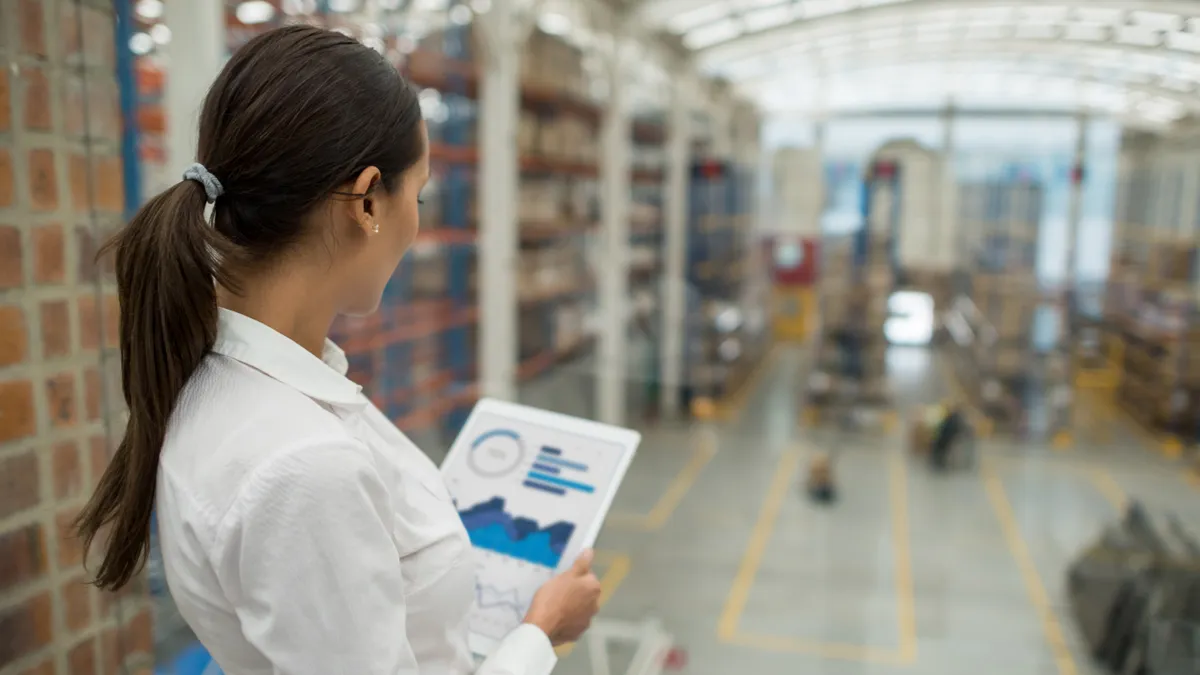More than 90% of a company’s potential disruption hot spots are somewhere in its supply chain.¹ That disruptive potential has never been more obvious than in 2020, when, by July, 73% of companies reported supply-side disruptions because of the pandemic.² In the face of overwhelming demand, suppliers struggled to catch up and fulfill pending orders even as operations came fully back online. Many procurement teams and logistics professionals lacked the robust communication and connections to their suppliers to timely address those disruptions.
As companies plan their way forward after the events of 2020, supply chain and procurement professionals have developed a newfound respect for supplier relationships. With automation and digital adoption on the rise, many business leaders have advanced initiatives that rely on supplier data to benchmark performance and calculate risk. Unfortunately, this type of supplier-relationship management works only when the data is available. While supply chain and procurement professionals lean into technology to build resiliency, it’s essential that the industry doesn’t forget to engage suppliers on the human level as well to encourage true collaboration.
This lesson has been circulating in the global sustainability community for quite some time. Global sustainability networks live and die on the data they collect. Sustainability professionals have spent years nurturing relationships with participants to ensure they measure progress, report emissions data, answer surveys and otherwise engage in meaningful ways. Without actionable data, any sustainability program ends up being little more than a pet project.
As a supply chain sustainability network that relies heavily on many-to-many data from thousands of participants, SupplyShift has found ways to incentivize upstream supplier participation to get the needed data. We encourage our buyers to publish data back to the supplier so both parties are better informed and can operate to similar standards. Procurement and supply chain can learn critical lessons about engaging suppliers from sustainability as businesses struggle to determine what their supply network will look like in a post-pandemic world.
Supplier Engagement: A Two-Way Street
Companies pay a supplier for the cost of goods, which then covers the supplier’s own costs for material sourcing, production and logistics. Because of this transaction, the buyer may feel entitled to additional information, such as supplier data about supply chain risks and strengths. While the buyer may want to know this information for their own benefit, the supplier gains little by giving it up. Many suppliers feel that providing this data only serves to expose their weaknesses to customers, which could threaten enduring business.
This is where participation in a strong sustainability network can help strengthen the broader supply chain. When companies engage suppliers across tiers to collect data about emissions, traceability, labor strategies, risks and other factors, participants become one contributor among many to a larger pool of data. This participation allows engaged parties to compile disparate data into a single location to identify trends and benchmark performance. As companies share feedback to suppliers and show them where they stand relative to their peers, suppliers are incentivized to improve in areas where they may not be performing up to par. This creates a ‘network effect’ around sustainability performance, where better data transparency informs and encourages everyone involved to improve the sustainability of their operations.
While boardrooms and sustainability budgets have traditionally been at odds within many companies, the upstream and downstream transparency offered through more holistic sustainability practices now provides corporate sustainability programs with a demonstrable return on investment. There has never been a better time for supply chain and procurement stakeholders to advance their corporate sustainability plans, because such programs focus on engaging the unseen suppliers that caused so much global disruption at the onset of the coronavirus pandemic. Engaging down-tier suppliers ultimately results in better performance and continuous improvement from all parties involved. Multifaceted engagement based on business continuity, environmental goals and social responsibility helps further strengthen these partnerships in preparation for the next big disruption.³
On the supplier side, participation in broader sustainability initiatives can help to avoid additional shutdowns and unexpected inventory and material shortages. With more advanced visibility into customer data and other regions, suppliers can see threats as they arise. This provides extra time to prepare accordingly and avoid stockouts or production failures.
Most of the real risk in the supply chain doesn’t come from Tier 1 suppliers but from further upstream in the supply chain.4 When companies strive to collaborate more directly with down-tier suppliers to optimize supply chain functions and mitigate risk, the supply chain as a whole becomes much stronger. Many-to-many sustainability networks provide a means for companies and suppliers separated by multiple tiers to share data and align business goals more easily.
For more information about building resiliency and making supply chain decisions based on data provided through the engagement of over 90,000 participating companies, check out today
¹ “Next generation supply chain management,” SupplyShift
² “73% of companies experienced supply-side disruption due to pandemic,” Supply Chain Dive
³ "How to prepare for a transparent supply chain in 2021,” SupplyShift
4 “A more sustainable supply chain,” Harvard Business Review






